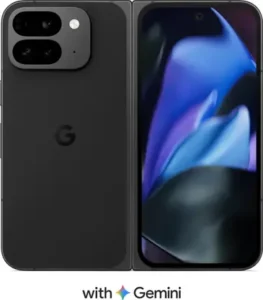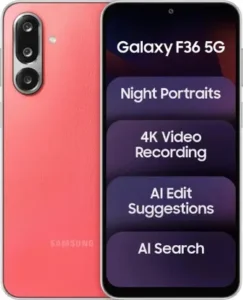Top 5 Camera Mobile Phones under 30000 for Beautiful Pictures
Discover the top 5 camera mobile phones under 30000 for great photos. Take beautiful pictures every day. Find your perfect camera phone today!
In today’s world, a good camera on your phone isn’t just a luxury; it’s a must-have. Whether you’re capturing moments with family, sharing snaps on social media, or exploring photography as a hobby, camera quality plays a big role. Now, you don’t need to spend a fortune to get a phone that takes stunning photos. Many affordable smartphones under ₹30,000 pack flagship-grade camera features. They’re built for clarity, color, and detail, rivaling some premium models.
This article will guide you through the best phones in this price range, highlighting key camera specs, modes, and what makes each stand out. Ready to find the perfect camera phone to elevate your photo game? Let’s dive into the top 5 options under ₹30,000.
Factors to Consider When Choosing a Camera Phone Under 30000
Camera Specifications: Megapixels, Aperture, and Sensor Size
When comparing cameras, megapixels tell only part of the story. A 200 MP sensor sounds impressive but must be paired with good hardware and software for great results. Sensor size is crucial — larger sensors absorb more light, delivering clearer images, especially in low light.
Aperture size also matters. Phones with wider apertures like f/1.8 or lower allow more light. This helps you take brighter photos in dim conditions without a flash. Narrower apertures give sharper photos during the day but struggle at night.
Camera Features and Modes
Smartphone manufacturers add modes like Night Mode, HDR, Panorama, and AI enhancements to make your photos pop. Night Mode boosts clarity in low light by stacking images for better detail. HDR balances shadows and highlights, preventing dark or overexposed spots. AI scene optimization automatically adjusts settings for the best shot, whether you’re clicking a landscape or a portrait.
Software and Image Processing Capabilities
Behind every good photo is clever software. Advanced image processing algorithms sharpen images, reduce noise, and boost colors. Regular software updates can improve your camera’s performance over time, fixing bugs and adding new features.
Additional Camera Hardware Features
Many phones include multiple lenses: ultra-wide, macro, or depth sensors. These give you creative options and help capture more diverse scenes. Optical Image Stabilization (OIS) reduces blur caused by shaky hands. It’s especially important when taking long exposure shots or videos.
Top 5 Camera Mobile Phones Under 30000
Redmi Note 13 Pro
The Redmi Note 13 Pro stands out with its impressive 200 MP main camera featuring OIS, making it a popular choice for photography lovers. It also includes an 8 MP ultra-wide lens and a 2 MP macro sensor for close-up shots.
Sample photos show vibrant colors and sharp details in different lighting — from bright daylight to dim evenings. The camera handles everything from landscape to close-up shots well.
Pros: Excellent main camera, good night shots, versatile lenses.
Cons: Slightly heavy, average portrait mode.
Realme 11 Pro Plus
Equipped with a 200 MP main sensor, the Realme 11 Pro Plus offers superb clarity and detail. Its ultra-wide 8 MP lens captures expansive scenes, perfect for group photos. It also has a 2 MP depth sensor for portraits.
Thanks to AI scene optimization, photos often look lively and natural. Users praise its zoom feature, which retains detail even at higher magnifications. The phone’s camera adapts well to different conditions, making it a solid choice.
Pros: High megapixel count, good zoom, excellent AI features.
Cons: Slightly pricey in this segment, software bloat.
Samsung Galaxy M14 5G
The Galaxy M14 5G pairs a 50 MP primary camera with 2 MP macro and depth sensors. While its megapixel count is lower, Samsung’s image processing ensures bright, balanced photos. Night shots come out clearer thanks to software optimization.
For beginners, it’s easy to use with adjustable settings for vibrant images. Its software enhancements often outperform other phones in the same price range.
Pros: Trustworthy brand, reliable software, vibrant images.
Cons: Lower megapixels, limited lenses for professionals.
Poco X5 Pro
The Poco X5 Pro pack a punch with a 108 MP main camera combined with ultra-wide and macro lenses. It strikes a perfect balance between gaming and photography, offering clear images across different scenarios.
Sample images reveal sharp, natural colors, even under tricky lighting. Tech reviews praise its versatility for casual photography and social media content.
Pros: High resolution, decent night mode, fast processing.
Cons: Slightly bulky design, software bloat.
Infinix Zero 5G 3
The Infinix Zero 5G 3 features a 50 MP primary camera, accompanied by ultra-wide and depth sensors. Its AI-based photography modes help optimize images automatically, making it simple for everyday shots.
Sample photos show good color reproduction and stable pictures during movement. It’s ideal for those who want decent camera performance without overcomplicating settings.
Pros: Good AI modes, budget-friendly, solid overall performance.
Cons: Limited manual controls, average macro quality.
Tips for Capturing Better Photos with Budget Smartphones
- Shoot during golden hours — early mornings or late afternoons for natural lighting.
- Use HDR modes to balance bright backgrounds with darker foregrounds.
- Stabilize your shots by holding the phone steady or using a tripod.
- Explore editing apps like Snapseed or Lightroom for refining your images.
- Keep your camera lens clean — smudges blur your shots.
Conclusion
Choosing a good camera phone under ₹30,000 is easier than ever. The Redmi Note 13 Pro and Realme 11 Pro Plus lead with high megapixels and versatile modes. Samsung Galaxy M14 5G offers dependable quality, while Poco X5 Pro offers high resolution for detail lovers. Infinix Zero 5G 3 gives you smart AI features at a lower price.
Match your choice to how you plan to use it — casual shooting, social media, or semi-professional work. Always try to test cameras in-store when possible, and keep your phone’s software updated for the best results. With these options, you don’t need to spend big to take beautiful pictures every day.


